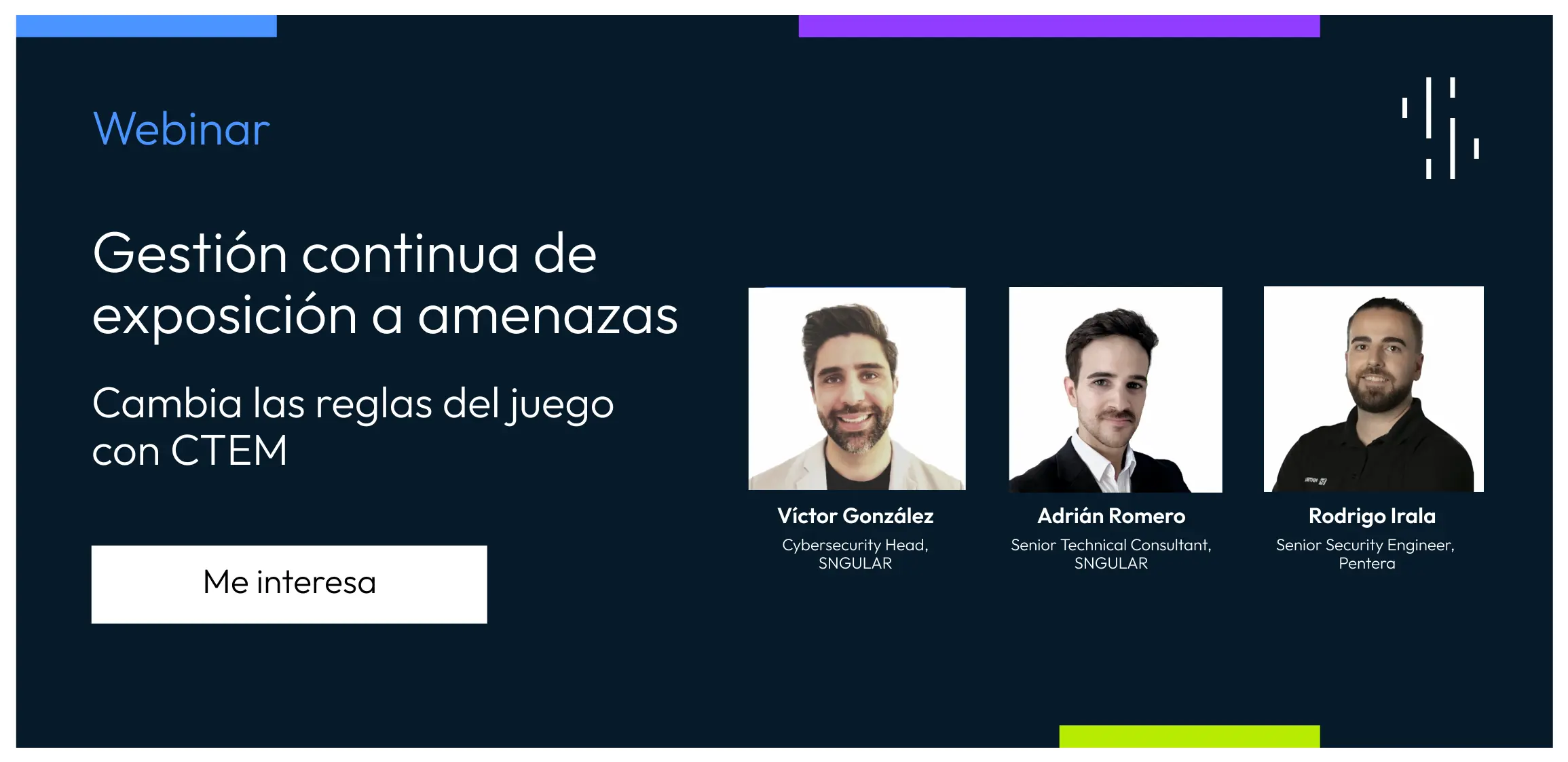
CTEM: The Revolution in Threat and Vulnerability Management
February 5, 2025
As you may already know, every year the technological environment of most companies grows exponentially, and managing it from a cybersecurity perspective has become a challenge for industry professionals.
The gap between the costs incurred due to cybercrime and the budget and personnel available in corporate cybersecurity departments is widening. Traditional security measures are no longer enough. Cyberattacks are becoming more complex, more frequent, and therefore, companies need to be on constant alert. This is where CTEM (Continuous Threat Exposure Management) comes into play—a new approach to threat management.
A constantly evolving threat landscape
Imagine your company facing a wave of attacks. Instead of reacting only when an incident occurs, the ideal scenario would be to detect these attacks before they happen. That’s what CTEM aims to do: it’s not just a reactive approach but a proactive model that keeps organizations one step ahead.
Years ago, cybersecurity threats were predictable. Attackers exploited known vulnerabilities, and traditional security controls, such as annual security audits, were sufficient. But all of that has changed. Today, threat actors and the TTPs (Tactics, Techniques, and Procedures) they use are far more sophisticated and advanced.
So, what can organizations do to adapt? How can they stay protected against this ever-evolving threat landscape? This is where traditional cybersecurity can no longer be static—it must evolve. Companies must be fast, agile, and, above all, capable of adapting in a short period of time. It is essential to have continuous visibility into threats that could impact infrastructure in order to respond as quickly as possible.

Managing threats: Where to start?
Managing an organization’s cybersecurity is no trivial matter. The constant addition of new information assets and the relentless emergence of new vulnerabilities make threat management—and its associated risks—an increasingly complex task.
Have you ever wondered if your company is truly prepared to face all these threats? Perhaps the answer is no, and that’s where CTEM comes into play. Instead of reacting after an attack, CTEM enables companies to manage their exposure continuously. It’s like having an alarm system that warns you when something is wrong so you can take action before it becomes a serious problem.
If you want to discover how to implement this approach and transform your organization's security, you can sign up for our free and exclusive webinar: Continuous Threat Exposure Management: Change the Game with CTEM.
Learn from experts how to enhance your cybersecurity strategy with a proactive and continuous management approach.
Why is implementing CTEM essential?
What makes CTEM innovative is its ability to provide continuous visibility into threats, without waiting for an attack to occur. Unlike traditional strategies that only assess security at specific moments, CTEM regularly validates the attack surface. But why is this so crucial?
Here are some key points:
• Continuous Visibility: If you don’t know what’s happening in your security infrastructure, how can you defend yourself? CTEM establishes short-term iterative cycles to detect risks before they become real threats.
• Reducing the Exposure Window: Attackers seek vulnerabilities they can exploit quickly. With CTEM, you can detect and remediate these vulnerabilities before cybercriminals take advantage of them.
• Risk Prioritization: There are too many threats to tackle all at once. CTEM helps you prioritize, focusing on the most critical threats with the highest potential impact.
• Continuous Improvement: The cybersecurity ecosystem is constantly changing. CTEM enables organizations to continuously adapt their defense strategies, keeping up with emerging threats.
• Regulatory Compliance: With security regulations evolving constantly, staying compliant is a daunting task. CTEM simplifies compliance, ensuring organizations don’t fall short during audits. Regulations such as DORA, NIS2, NIST, ENS, ISO27001, and PCI DSS include various controls that CTEM helps meet, such as risk management, resilience against threats, continuous security improvement, and incident reporting.
How to effectively implement CTEM?
So, how is this implemented in practice? Adopting CTEM requires a structured approach, ensuring that all aspects of threat management are covered. Key elements include:
• Governance: Having constant visibility into your infrastructure. It’s not just about detecting vulnerabilities but prioritizing them and making quick decisions on how to act. The key is to focus on what truly matters to your business.
• Automated Security Validation (ASV): Think of it as an automated cyberattack drill. Continuous testing ensures that your systems are always prepared for potential attacks without manual intervention. ASV solutions act as a team of technical auditors continuously validating defenses, exposure to threats, and vulnerabilities. Unlike traditional analysis, which only draws conclusions based on vulnerability severity, ASV solutions correlate weaknesses, pivot between assets, and prioritize risks based on real attack scenarios.
• Risk Management: Not all risks are the same. The goal is to evaluate which threats pose the greatest potential impact and address them immediately. This optimizes resource management and prevents minor issues from consuming excessive attention.
• Compliance: Aligning with security regulations. Meeting industry standards is essential, and CTEM streamlines the compliance process.
Is your company ready for CTEM?
Implementing a model like CTEM is not just about wanting to do it—it requires organizations to reach a certain level of cybersecurity maturity. CTEM does not replace fundamental controls such as penetration testing, vulnerability management, or security audits. Instead, it enhances and complements these practices, providing an additional layer of continuous and proactive protection.
Before transitioning to CTEM, it’s crucial to ask: Does my company meet the minimum requirements to implement it effectively? This includes having:
• A solid cybersecurity foundation
• Established vulnerability management processes
• The resources to adopt an iterative and continuous approach
CTEM is not a starting point, but an evolution for companies looking to maximize their ability to anticipate threats.
Adopting CTEM means embracing a resilient approach, where continuous visibility, risk prioritization, and ongoing improvement are fundamental pillars. By integrating CTEM, you’ll not only enhance your security posture but also position your organization ahead of the curve in an ever-changing threat landscape.
So, are you ready to take your cybersecurity strategy to the next level?
Our latest news
Interested in learning more about how we are constantly adapting to the new digital frontier?

Insight
April 8, 2025
Privacy at risk, what do they know about you and how can you protect yourself?

Tech Insight
March 26, 2025
The Seven Phases of a Cyberattack: A Detailed Look at the Cyber Kill Chain

Insight
December 10, 2024
Groundbreaking technologies today that will reshape the innovation landscape in 2025


